Keys vs Sabalenka: AO Women’s Final Analysis
A run for the ages, AD court serves, brilliant ball striking, embracing the moment
Keys def. Sabalenka 6-3, 2-6, 7-5
Eight long years after suffering the ultimate heartbreak at the 2017 US Open final, Madison Keys broke the drought and clinched her maiden Grand Slam title on Saturday night. She staged a powerful performance to defeat Aryna Sabalenka in three high-powered, high-quality sets.
Keys did it the hard way, fighting through one of the toughest draws in recent memory, and emphatically shaking off the tag of being ‘one of the best players to never win a slam’.
Let’s get into the analysis.
Quick note: A big thank you to everyone for 100 subscribers. To everyone who has read or engaged with Break Point, it’s very much appreciated. For those who aren’t subscribed but enjoy tennis analysis like this, please consider subscribing to support my work. It’s free, and there’s plenty more to come in the future!
A run for the ages
Before diving into the match analysis, let’s take a look at the draw that Keys conquered at this year’s AO.
Not only did she beat both the number 1 and number 2 seeds en route to her Australian Open victory – the first since Svetlana Kuznetsova in the 2009 French Open – but she also toppled a fired-up Danielle Collins, an ever-potent Rybakina, and the seriously in-form Svitolina beforehand.
If you then add in the Adelaide International title, where she took down Ostapenko and Pegula along the way, it has been nothing short of a sensational run for Keys this January. She’s beaten virtually every top player that’s come her way this month.
It wasn’t smooth sailing either, with 5 of her 7 AO victories going the distance, including every match from the Round of 16 onwards – the first instance of this is in the Open Era. She spent 13 hours and 20 minutes on the court in just this tournament alone – averaging just under 2 hours per match for the whole tournament.
Keys’ serving clinic – power and placement
Having a serve that can win enough free points and generate +1 opportunities is an invaluable asset in tennis generally, but even more so for big occasions such as Grand Slam finals. Keys’ serve rose to the occasion and was one of the big factors in her win.
It started early. In the first set, Keys managed to land 19 of 22 (86%) first serves, winning two-thirds of these points. In contrast, Sabalenka landed just under two-thirds (64%) of her first serves and won less than half of those points. These were the numbers at 4-1, 30-0 in the first set:
While the hot serving start from Keys regressed back to a more sustainable level over the match, she still gained a lot more value from her first serves compared to Sabalenka. Keys won nearly 70% of her first service points, compared to 60% for Sabalenka.
One of the obvious reasons behind this is that Keys hits a big first serve. Over the match, her first serve speed was, on average, 10km/h faster than Sabalenka’s (174 km/h vs 164 km/h). This is no mean feat, considering Sabalenka is one of the strongest first servers on the WTA Tour.
In fact, it was Keys’ fastest serving performance at this year’s AO since her first-round match against Ann Li.
But it wasn’t just the speed of Keys’ serve that helped her to win so many first serve points – it was also down to her placement. Keys enjoyed a staggering amount of success serving from the AD court, both down the T and out wide.
Keys aimed 50% of her first serves from the AD court down the T, winning 16/16 (100%!) of points from there. That’s correct – when Keys landed an AD court first serve down the T, she won every single point.
It was a similar story when Keys managed to get her AD court serve out into the widest third of the service box – she landed 25% of her first serves there and won 7/8 (88%) of points.
Keys was able to find these accurate AD court serves at critical junctures. Maybe none were as important as the one below, when she was trailing 15-30 at 5-5 in the third set:
Keys’ brilliant ball-striking (part 1: forehand)
One of the most defining features of Keys’ blistering run to start this year has been her crisp, ball-striking from both her forehand and backhand wings. Saturday’s final was no exception.
Keys out-duelled Sabalenka from the baseline in key moments, using her flat and powerful groundstrokes to keep Sabalenka on the back foot and prevent her from dictating rallies. This is something that Sabalenka has not been used to in recent times, as she is normally the aggressor in rallies.
To illustrate this point – in the first set, Keys was hitting her forehand 14 km/h faster on average than Sabalenka.
From the outset, Keys was looking to be aggressive with her forehand, taking time away from Sabalenka and keeping her pinned to the baseline. This inside-out forehand from Keys was a good preview of the hitting to come:
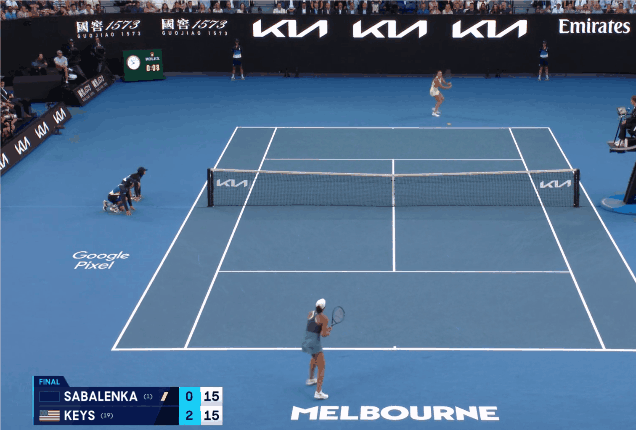
Keys was also able to punish Sabalenka’s net approaches early in the match, not letting Sabalenka settle. Sabalenka only won 2/6 (33%) of her net points in the first set. A good point below to illustrate this:

While Sabalenka did even things up in the second set, Keys’ forehand once again found its range in the final set. Keys’ forehand heaviness, which is defined as the combination of speed and spin generated on forehand groundstrokes,1 was around 22% higher than Sabalenka’s:
For some perspective – in 2023, the average value for forehand heaviness on the women’s side was around 6.6. Anything less than 6.3 represented a ‘less heavy’ forehand value. In that case, Keys’ forehand heaviness of 8.42 is very impressive.
Here’s one more massive Keys forehand for good measure:
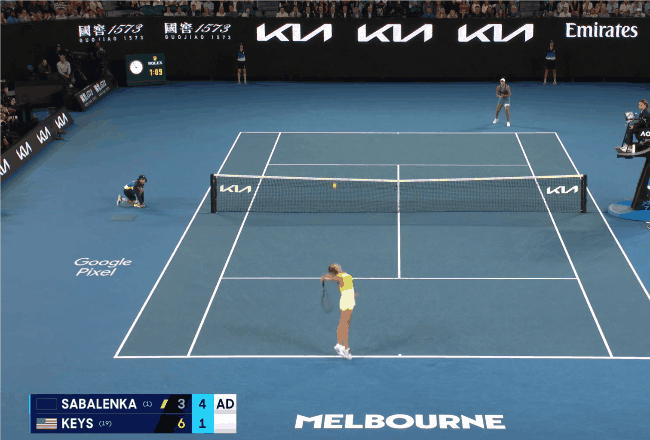
Keys’ brilliant ball-striking (part 2: backhand)
While Keys’ forehand was mostly in the spotlight, her backhand was equally as lethal. Her backhand is beautifully compact, a contrast against the big backswing that her forehand possesses. Keys inflicted a lot of damage with backhands down the line, hitting many outright winners in this fashion, often on crucial points.
Take this crunching return winner that Keys hits late in the third set. Keys is in position to strike on the Sabalenka second serve and she makes sweet contact:
Another example of the big Keys’ backhand at a crucial juncture of the match – set point in the first set. She immediately puts Sabalenka on the back foot with a drilled backhand return, before following up with another down-the-line winner to clinch the set. Fearless tennis:
Keys often made use of the one-two forehand/backhand combo to take control of points and hit winners, as shown below. Also note the AD court serve down the T:
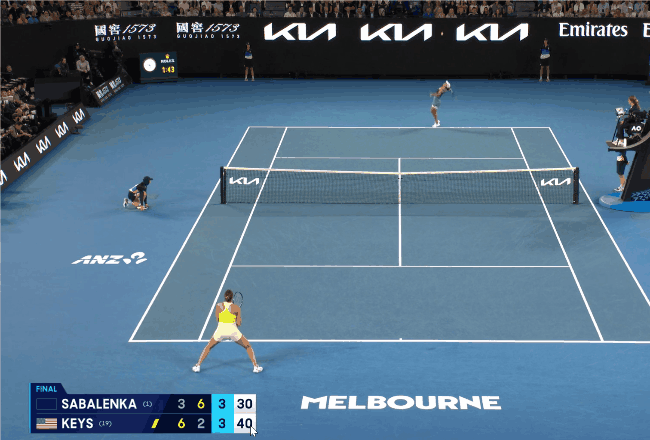
Embracing the moment - the 5-5 game
Keys said that she was overawed in her loss to Sloane Stephens in the 2017 US Open final:
“Yeah, I've obviously thought of that match endlessly for the past eight years," admitted Keys. "I think during that match, I was so consumed with being nervous and the moment and the opportunity… that I never really gave myself a chance to actually play.”
Eight years on, Keys released the shackles and embraced the big moments, playing with composure and bravery. There’s maybe no better illustration of this than the 5-5 game in the third set.
After hitting a big first unreturned first serve down 15-30 at 5-5, Keys remains in jeopardy at 30-all. Sabalenka clubs a deep forehand return at the feet of Keys, but she manages to somehow get low enough and re-direct it (with considerable pace, no less) back over the highest part of the net and for an outright winner.
If that last shot wasn’t impressive enough on its own, Keys repeated the dose at 40-30 with another huge off-forehand winner – in the process, clinching the hugely important game.
Short note - Sabalenka’s variety
Although Sabalenka missed out on the three-peat on Saturday, I was still impressed with the variety she has incorporated into her game, especially her drop shots.
As Sabalenka has such a powerful forehand, she creates a lot of space on the court as she pushes her opponents either wide or behind the baseline. This space can be capitalised on with the occasional drop shot – a weapon that she has added to her arsenal in recent times and which I have previously discussed. A quick example from the second set at 4-1 below:
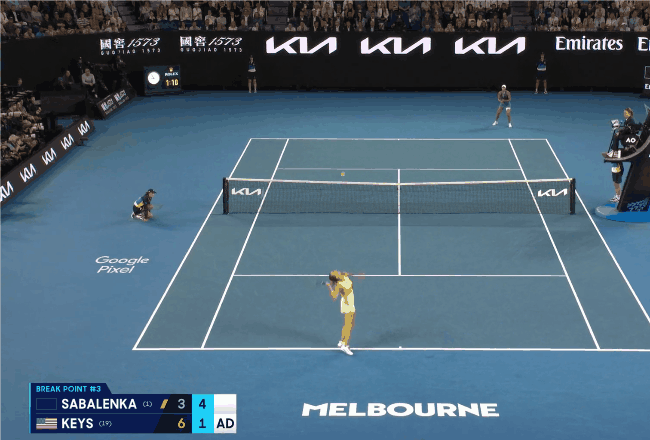
Overall thoughts
A final that certainly lived up to its billing. A heavy-hitting, engrossing match between the two most in-form hard court players on tour. One going for a three-peat. One looking to win their maiden Grand Slam. What more could you ask for?
There was very little to separate the two players on Saturday night. While not a perfect measure, the winners and unforced errors gives us an indication of the evenness of the contest:
In the end, Keys was simply able to dictate more in the crucial moments. She got off to a quick start in the first set, and was then willing to take on more risk in the late stages of the third set. She took matters into her own hands.
A simple but powerful quote from Keys to finish:
“I didn't always believe that I could get back to this point. But to be able to do it and win, it means the world to me.”
2,694 days after the toughest moment of her tennis career, Madison Keys achieved the dream she thought might have slipped through her fingers forever. How special this win must be.

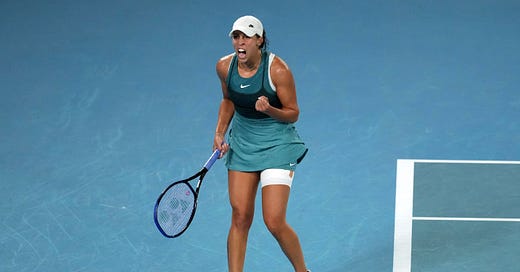







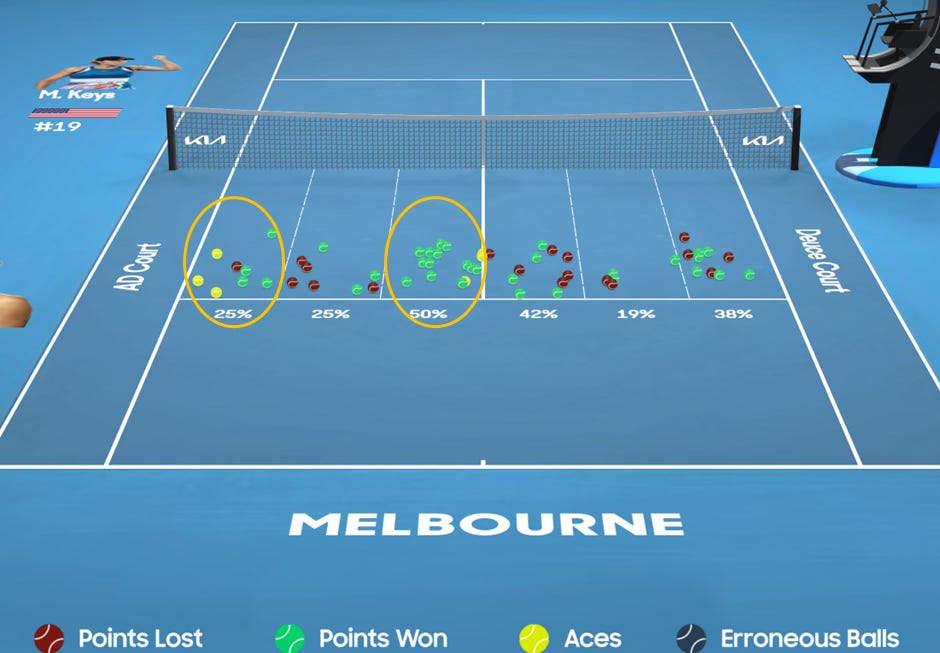
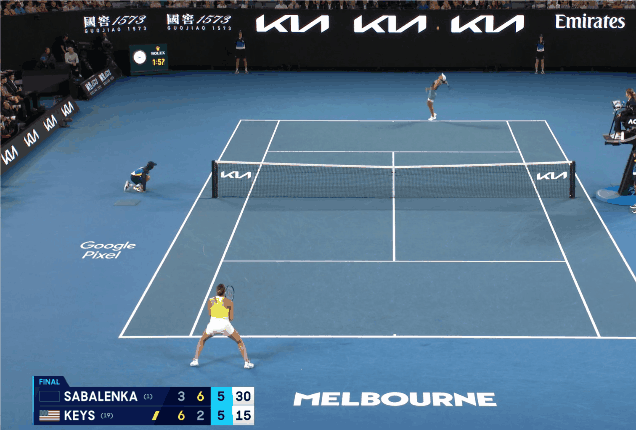
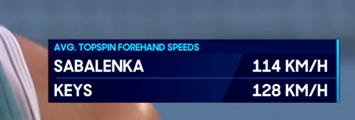

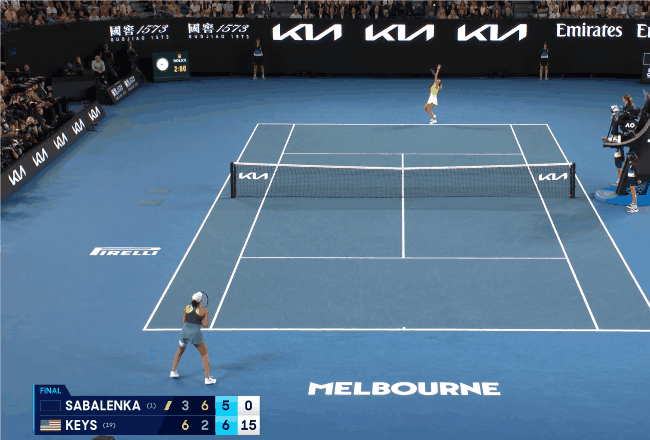
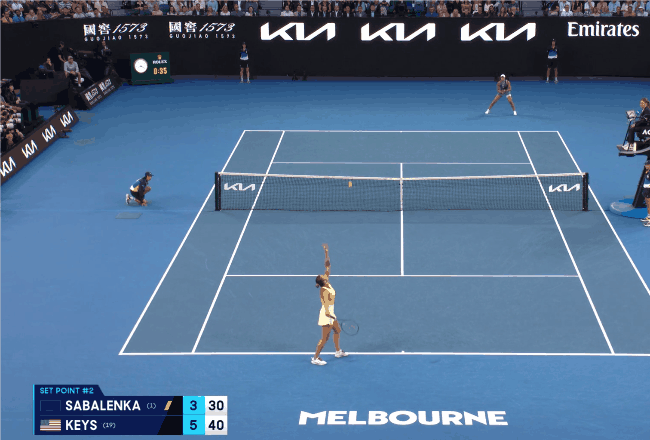

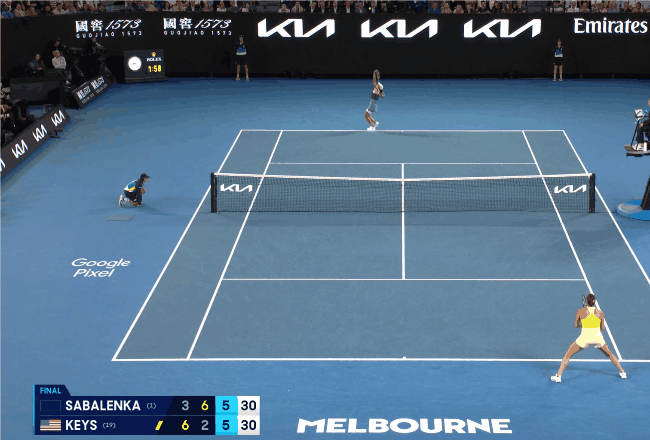


Wonderful analysis Austen, thanks!